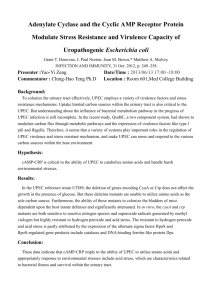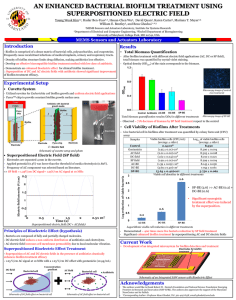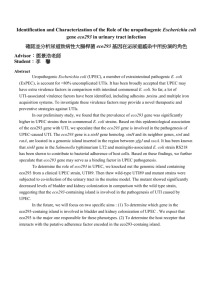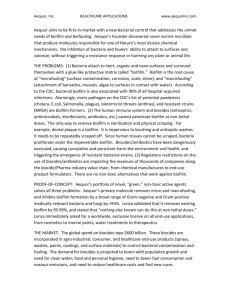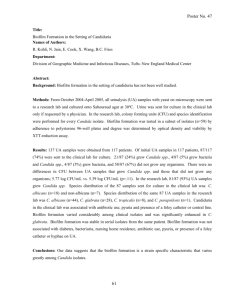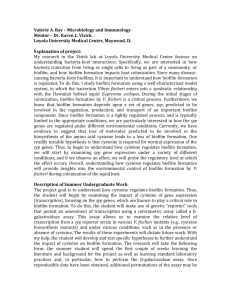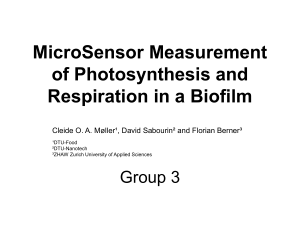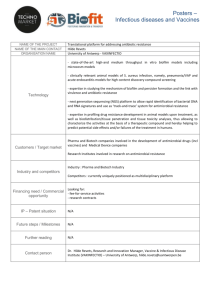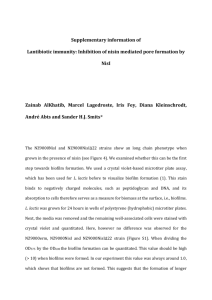Transposon Mutagenesis Identifies Uropathogenic Escherichia coli
advertisement
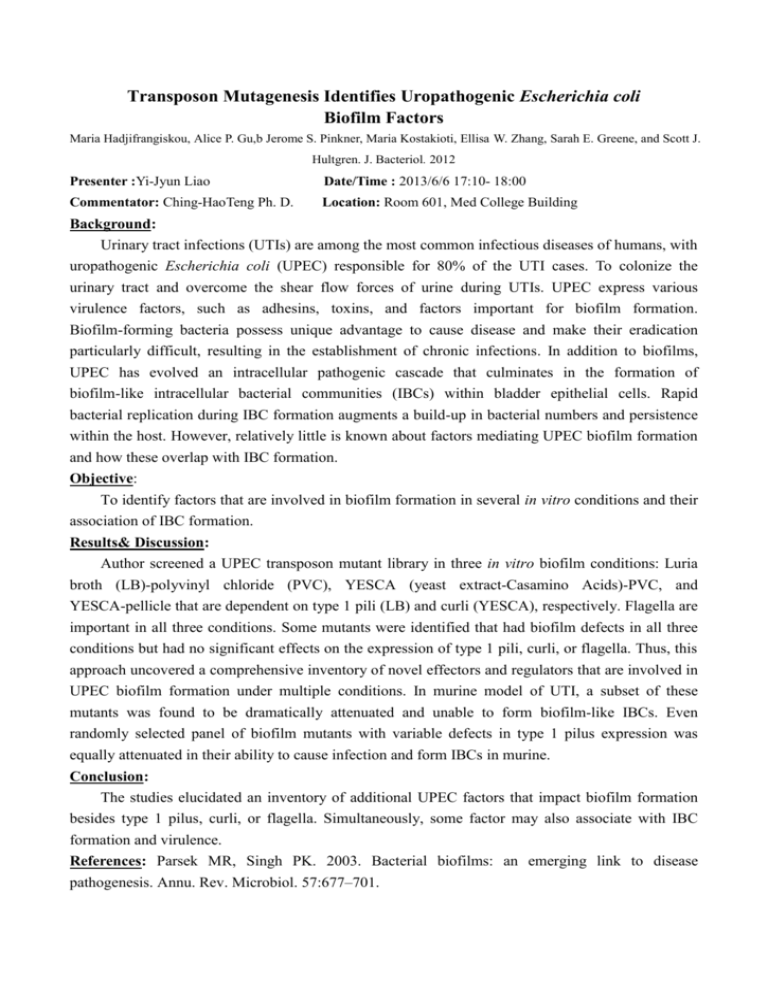
Transposon Mutagenesis Identifies Uropathogenic Escherichia coli Biofilm Factors Maria Hadjifrangiskou, Alice P. Gu,b Jerome S. Pinkner, Maria Kostakioti, Ellisa W. Zhang, Sarah E. Greene, and Scott J. Hultgren. J. Bacteriol. 2012 Presenter :Yi-Jyun Liao Date/Time : 2013/6/6 17:10- 18:00 Commentator: Ching-HaoTeng Ph. D. Location: Room 601, Med College Building Background: Urinary tract infections (UTIs) are among the most common infectious diseases of humans, with uropathogenic Escherichia coli (UPEC) responsible for 80% of the UTI cases. To colonize the urinary tract and overcome the shear flow forces of urine during UTIs. UPEC express various virulence factors, such as adhesins, toxins, and factors important for biofilm formation. Biofilm-forming bacteria possess unique advantage to cause disease and make their eradication particularly difficult, resulting in the establishment of chronic infections. In addition to biofilms, UPEC has evolved an intracellular pathogenic cascade that culminates in the formation of biofilm-like intracellular bacterial communities (IBCs) within bladder epithelial cells. Rapid bacterial replication during IBC formation augments a build-up in bacterial numbers and persistence within the host. However, relatively little is known about factors mediating UPEC biofilm formation and how these overlap with IBC formation. Objective: To identify factors that are involved in biofilm formation in several in vitro conditions and their association of IBC formation. Results& Discussion: Author screened a UPEC transposon mutant library in three in vitro biofilm conditions: Luria broth (LB)-polyvinyl chloride (PVC), YESCA (yeast extract-Casamino Acids)-PVC, and YESCA-pellicle that are dependent on type 1 pili (LB) and curli (YESCA), respectively. Flagella are important in all three conditions. Some mutants were identified that had biofilm defects in all three conditions but had no significant effects on the expression of type 1 pili, curli, or flagella. Thus, this approach uncovered a comprehensive inventory of novel effectors and regulators that are involved in UPEC biofilm formation under multiple conditions. In murine model of UTI, a subset of these mutants was found to be dramatically attenuated and unable to form biofilm-like IBCs. Even randomly selected panel of biofilm mutants with variable defects in type 1 pilus expression was equally attenuated in their ability to cause infection and form IBCs in murine. Conclusion: The studies elucidated an inventory of additional UPEC factors that impact biofilm formation besides type 1 pilus, curli, or flagella. Simultaneously, some factor may also associate with IBC formation and virulence. References: Parsek MR, Singh PK. 2003. Bacterial biofilms: an emerging link to disease pathogenesis. Annu. Rev. Microbiol. 57:677–701.
